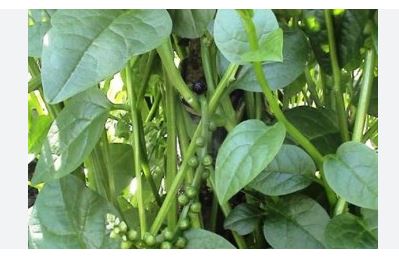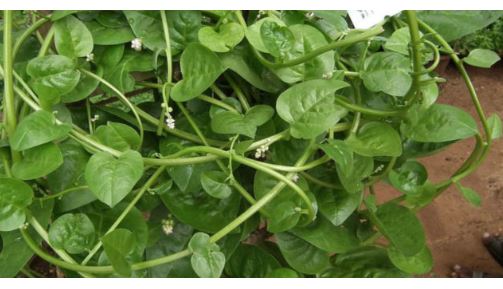
African cuisine boasts a vibrant array of vegetables that are staples across the continent. Green leafy plants hold a central place in daily meals, often served alongside staples like maize, rice, or yams. These vegetables are typically rich in nutrients and offer a natural source of vitamins and minerals, supporting both flavor and health. They are often cooked simply, allowing their distinct tastes and textures to shine through in soups, stews, or sautéed dishes.
Many of these vegetables are grown locally in home gardens or community farms, making them both accessible and affordable. Their resilience to varying climates makes them dependable, even in regions facing irregular rainfall or harsh growing conditions. In rural areas, they are often foraged or cultivated using traditional farming practices passed down through generations.
These plants play a significant role in cultural identity and heritage. Recipes vary from region to region, with preparation methods shaped by local customs and preferences. Whether served during everyday meals or festive gatherings, they connect people to their roots and histories through taste and tradition.

African Vegetables
Amaranth (Amaranthus spp.)
- Description: A leafy green with broad, tender leaves, ranging from deep green to reddish hues; grows as an annual herb up to 1-2 meters tall. Known for its resilience in hot, dry conditions.
- Uses: Leaves are boiled or stir-fried as a side dish, added to stews, or mixed with grains; seeds are ground into flour or popped like cereal. Common in East and West African cuisines.
Okra (Abelmoschus esculentus)
- Description: Slender, green, finger-like pods with a fuzzy exterior; mucilaginous when cooked, with small white seeds inside. Plants reach 1-2 meters.
- Uses: Pods are stewed in soups (e.g., gumbo), fried, or pickled; the slimy texture thickens dishes. A West African staple, especially in Nigeria and Ghana.
African Eggplant (Solanum aethiopicum)
- Description: Small, round to oval fruits, green when immature, turning red or orange when ripe; bitter taste increases with maturity. Shrub grows to 2 meters.
- Uses: Fruits are eaten raw, boiled, or stewed with meats; leaves are cooked as greens. Popular in West and Central Africa, known as garden eggs.
Fluted Pumpkin (Telfairia occidentalis)
- Description: Large, dark green, lobed leaves on a climbing vine; produces ribbed, pumpkin-like fruits. Native to West Africa.
- Uses: Leaves (ugu) are used in Nigerian soups like egusi or vegetable stew; seeds are roasted or boiled as snacks. Rich in protein and vitamins.
Saka/Spider Plant (Cleome gynandra)
- Description: Erect annual with sparse, palmate leaves (3-7 leaflets); bitter, peppery taste; grows 25-150 cm tall with white to pink flowers.
- Uses: Leaves are boiled to reduce bitterness, added to stews, or fermented; used in East Africa (e.g., Kenya) for nutrition and traditional medicine.
Murenda/Jute Mallow (Corchorus olitorius)
- Description: Slender, green leaves on a bushy plant up to 1-2 meters; mucilaginous when cooked, with a mild, earthy flavor.
- Uses: Leaves (ewedu) are cooked into slimy soups in West Africa or stewed with meats in Egypt and Sudan; thickens dishes like okra.
Cowpea Leaves (Vigna unguiculata)
- Description: Trifoliate, medium green leaves from a legume; tender when young, grown alongside protein-rich cowpea seeds.
- Uses: Leaves are steamed, sautéed, or added to soups; common in West and East Africa as a nutritious green complement to the seeds.
Ethiopian Kale (Brassica carinata)
- Description: Dark green, slightly waxy leaves with a mustard-like bite; robust, grows to 1 meter, a hybrid of cabbage family species.
- Uses: Leaves and stems are steamed, stir-fried, or pickled; a staple in Ethiopian cuisine, often paired with injera.
Bitter Leaf (Vernonia amygdalina)
- Description: Glossy, dark green, elongated leaves on a shrub; intensely bitter taste due to alkaloids, growing 2-5 meters tall.
- Uses: Boiled to reduce bitterness, used in Nigerian soups (e.g., bitterleaf soup); valued for medicinal properties across West Africa.
Waterleaf (Talinum triangulare)
- Description: Succulent, light green leaves on a low, sprawling herb; juicy with a mild, spinach-like flavor; thrives in wet seasons.
- Uses: Cooked in soups or stews (e.g., edikang ikong) in Nigeria; eaten raw in salads; adds moisture and thickness to dishes.
African Nightshade (Solanum scabrum)
- Description: Dark green, oval leaves on a bushy plant up to 1 meter; mildly bitter berries (green to black) are also edible when cooked.
- Uses: Leaves are boiled or sautéed as greens; berries used in sauces or stews. Widely eaten in East Africa, like Kenya and Tanzania.
Cassava Leaves (Manihot esculenta)
- Description: Large, palmate, deep green leaves from the cassava plant; slightly bitter, requiring careful preparation to remove toxins.
- Uses: Pounded and cooked into stews (e.g., saka saka) in Central and West Africa; paired with fish or meat; a key green in Congo and Cameroon.
Celosia (Celosia argentea)
- Description: Broad, tender, green leaves (sometimes reddish) on an erect annual, growing 30-100 cm; mild, spinach-like flavor with a soft texture.
- Uses: Boiled or stir-fried as a vegetable in West Africa (e.g., Nigeria’s soko yokoto stew); added to soups or eaten with grains.
Baobab Leaves (Adansonia digitata)
- Description: Dark green, palmate leaves from the iconic baobab tree; slightly mucilaginous and earthy when cooked, rich in nutrients.
- Uses: Dried and powdered for sauces or soups (e.g., miyan kuka in Nigeria); fresh leaves boiled as greens in West and East Africa.
Hibiscus Leaves (Hibiscus sabdariffa)
- Description: Lobed, green leaves from the roselle plant; tangy and slightly sour due to organic acids, with a tender bite.
- Uses: Cooked into stews or soups (e.g., Ghana’s kontomire); used fresh in salads or as a wrap in West African cuisines.
Moringa Leaves (Moringa oleifera)
- Description: Small, feathery, bright green leaflets on a fast-growing tree; mildly nutty and earthy, packed with vitamins and minerals.
- Uses: Sautéed, boiled, or added to soups across Africa; dried and powdered as a nutritional supplement or tea.
Sweet Potato Leaves (Ipomoea batatas)
- Description: Heart-shaped, green leaves from the sweet potato vine; tender and slightly sweet, similar to spinach but milder.
- Uses: Steamed or stir-fried as a side dish; added to stews in East Africa (e.g., Uganda) and Southern Africa.
Pumpkin Leaves (Cucurbita moschata)
- Description: Broad, soft, green leaves from pumpkin vines; mildly sweet and earthy, with a velvety texture when cooked.
- Uses: Boiled or stewed with groundnuts or fish in Southern and West Africa (e.g., Zimbabwe’s muboora); nutrient-rich side.
African Basil (Ocimum gratissimum)
- Description: Oval, dark green leaves on a bushy herb; aromatic, peppery, and clove-like, stronger than European basil.
- Uses: Used as a spice in soups (e.g., Nigeria’s pepper soup) or fresh in salads; also medicinal in teas across Africa.
Kenaf (Hibiscus cannabinus)
- Description: Large, lobed, green leaves on a tall annual; slightly sour and mucilaginous, akin to jute mallow but coarser.
- Uses: Cooked into slimy stews or soups in West Africa; leaves paired with grains or meat for texture and flavor.
Rape Greens (Brassica napus)
- Description: Dark green, slightly waxy leaves from the rapeseed plant; mild, cabbage-like taste with a tender-crisp bite.
- Uses: Steamed or sautéed as a side in Southern Africa (e.g., South Africa’s morogo); added to stews or porridge.
Wild Spinach (Grewia spp.)
- Description: Small, oval, green leaves from a shrub or tree; earthy and slightly tart, tougher than cultivated spinach.
- Uses: Boiled or stewed as a wild green in East and Southern Africa; a traditional food source during scarcity.
Yoruba Spinach (Solanum macrocarpon)
- Description: Broad, dark green leaves on a bushy plant; mild and slightly bitter, with a smooth texture when cooked.
- Uses: Cooked into soups (e.g., Nigeria’s egusi) or stir-fried; a Yoruba staple, often paired with peppers and fish.
Shirietso (Erythrococca bongensis)
- Description: A shrub with small, dark green leaves; grows in tropical African forests, reaching 1-3 meters, with a slightly bitter taste due to bioactive compounds.
- Uses: Leaves are boiled or pounded into pastes for medicinal stews in Central and East Africa (e.g., Rwanda); traditionally used as a vegetable less common as a culinary green.
Nderema/Malabar Spinach (Basella alba)
- Description: A perennial vine with thick, glossy, dark green leaves (or reddish in the ‘Rubra’ variety); mucilaginous and mild, growing up to 10 meters in tropical regions.
- Uses: Leaves and stems are cooked in soups or stir-fries across tropical Africa; eaten raw in salads or as a spinach substitute; valued for its high protein and vitamins.
Miroo/Rattle Weed (Crotalaria retusa)
- Description: An erect annual legume with narrow, green leaves and yellow flowers; grows 30-100 cm, with a mildly bitter taste; seeds rattle in pods when dry.
- Uses: Young leaves are boiled as a potherb in East Africa (e.g., Kenya); used sparingly due to potential toxicity in older plants; also a fodder crop or green manure.
Livokoyi (Amaranthus mangostanus)
- Description: A variant of amaranth with tender, green to purplish leaves; grows 1-2 meters as an annual, with a mild, earthy flavor similar to other amaranths.
- Uses: Leaves are steamed or stewed in East African dishes (e.g., Tanzania); mixed with maize porridge or meats; a nutritious green rich in iron and calcium.
Mushroom (Various species, e.g., Pleurotus spp.)
- Description: Edible fungi with fleshy, green-tinged caps in some wild African varieties (e.g., oyster mushrooms); earthy and umami, growing on decaying wood or soil.
- Uses: Wild or cultivated mushrooms are grilled, stewed, or dried in Central and Southern Africa; added to sauces or soups for depth of flavor.